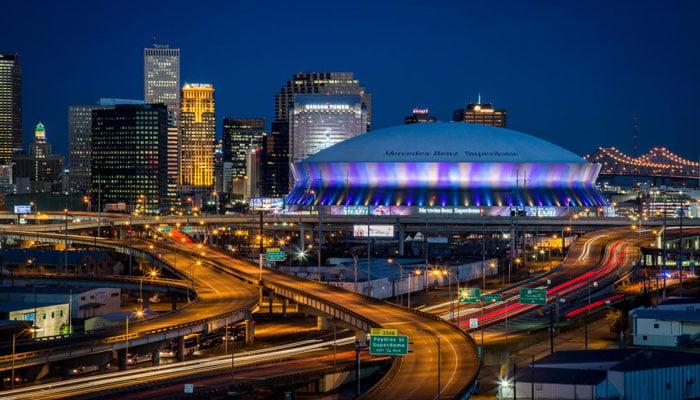Travel
Analysis: Can local production help make electric vehicles more affordable?
字号+ Author:Smart News Source:Business 2025-01-15 13:05:03 I want to comment(0)
ELECTRIC vehicles (EVs) are capturing the imagination of Pakistan’s motorists, especially in the high-end market, due to an increased awareness about their environmental benefits, as well as the prospect of fuel savings amid a global push to wean automobiles off their reliance on fossil fuels. Under the current pricing regime, even the most basic EV model is quite out of reach for the average car buyer. However, the government’s recently introduced New Energy Vehicle (NEV) – which aims to see 30pc of all new cars running on electric power by 2030 – has given some segments of the market hope that incentives being offered to new car-makers entering the Pakistani market now will help make such cars more affordable a few years down the line. The recent entry of some major names in the NEV market has contributed to this optimism, chief among whom is the Chinese auto giant BYD, which has partnered with the Mega Motor Company (MMC) to build an NEV manufacturing plant near Karachi. The company, which rivals Tesla for the crown of world’s biggest EV maker, has already introduced two models — the Atto 3 SUV and Seal sedan. According to a spokesperson, plans are also underway to expand the lineup once local production begins at the $150 million project, which is expected to have the capacity to roll out 50,000 vehicles annually. The company aims to achieve that goal within two years of the plant becoming operational, which is expected to be sometime in 2026. But they are far from being the only players: Regal Automobiles (RA), has launched what is being billed as the country’s first electric sports utility vehicle (SUV) in Lahore, the Seres 3. The vehicle is imported in Completely Knocked Down (CKD) form and assembled at their Manga Mandi plant. CKDs are vehicles that are shipped in parts and assembled at the dealership or factory. Conversely, Completely Built Units (CBUs) are shipped in one piece and do not need to be assembled. There are several other options too. The Honri, a more compact EV, has been introduced by Yousuf Dewan Companies. Sazgar Engineering Works Ltd, which has already brought the Chinese Great Wall Motor (GWM) ORA 03 to Pakistan’s roads, also has plans to launch CKD production from the end of next year. But a generation of old-school hybrids (HEVs) and the newer technology plug-in hybrid electric vehicles (PHEVs) are also available to buyers. These employ an internal combustion engine and can run on fuel as well as battery power. The main difference between the two is that HEVs cannot be charged up with electricity directly and have to rely on their engines to produce electric power. PHEVs, however, can be charged at charging stations and run on traditional fuel. Toyota’s Corolla Cross, Sazgar’s Haval and Jolion and the Hyundai Santa Fe and Elantra models are some of the major names in the HEV market. In addition, Lucky Motors will soon launch a locally assembled version of the Kia HEV, while the company has already introduced the imported EV5 model. As far as PHEVs are concerned, MG Motors unveiled the first locally assembled MG HS PHEV in October. The company has said that it also plans to localise its manufacturing, but the vehicles being sold are currently being imported as CBUs. Ghandhara Automobiles is also in the process of launching the Cherry Cross Plug-in Hybrid (PHEV) model in January or February 2025. At present, the imports of completely built units (CBUs) of new energy vehicles — a term that refers to automobile vehicles fully or predominantly powered by alternative energy other than fossil fuels — represent less than 0.1 per cent of vehicles on the road. So while it makes sense for motorists who can afford it, to switch to some sort of electric vehicle in the future, will localisation of their production make them more accessible to the average motorist? Local production is usually thought as being cheaper, and it has in the past helped automotive companies bring down prices of their vehicles and parts. For example, the heavy localization of Suzuki parts makes their vehicles some of the cheapest to run, which is reflected in their popularity on the roads. But when it comes to NEVs, the parts and batteries required are not being manufactured in Pakistan, and perhaps won’t be for the forseeable future. Additionally, due to incentives granted by the government, it is currently cheaper for companies to import CBU models rather than if those same vehicles were being brought in as CKD parts and assembled locally. The Pakistan Automotive Manufacturers Association (PAMA) has already sounded the alarm on this rather counter-intuitive policy. In a letter to the Engineering Development Board (EDB), it warned that the import of completely built units (CBUs) at a reduced duty structure compared to CKDs could harm the local industry and leave CBU customers without after-sales support. It also points out that HEV and PHEV vehicles, while still considered ‘green’, are not as emission-free as NEVs or EVs, as they still employ an internal combustion engine and need fuel to run. Therefore, they have recommended that PHEVs, which are a part of the government’s latest policy, be left out of its ambit. Instead, they have suggested that the current legal regime, under the Auto Industry Development and Export Policy (AIDEP 2021-2026) be allowed to continue. So is there any hope that with CKD localisation, EVs will become more affordable in the years to come? According to a spokesperson for BYD, localisation of parts, including EV batteries — which constitute 40 per cent of a vehicle’s cost — will be explored in the CKD phase to make these new energy vehicles more affordable. NEVs require specialised components, such as electric motors, hybrid transmissions and high-capacity batteries, making them inherently more expensive than traditional internal combustion engine (ICE) vehicles. The current tax incentives for NEVs in Pakistan are “good but not the best in the world”, he said, hoping that the new NEV Policy would introduce better incentives to level the playing field.
1.This site adheres to industry standards, and any reposted articles will clearly indicate the author and source;
 Related Articles
Related Articles-
Punjab govt confirms gold reserves in Attock
2025-01-15 12:36
-
Minor boy survives five days in lion-inhabited Zimbabwe park
2025-01-15 12:36
-
South Korean officials arrive to detain impeached Yoon amid protest
2025-01-15 12:35
-
Minor boy survives five days in lion-inhabited Zimbabwe park
2025-01-15 11:44
 User Reviews
User Reviews Recommended Reads
Recommended Reads Hot Information
Hot Information- Property buyers in Punjab face 5pc penalty on non-banking transactions; details inside
- Vegas Tesla blast suspect identified as US soldier
- Sara Sharif's father, convicted of murder, attacked in jail
- Minor boy survives five days in lion-inhabited Zimbabwe park
- Six Iranians beheaded in Saudi Arabia for drug smuggling
- 8 dead, 15 injured in north China market fire
- Who gifted what to US president, first lady?
- Who gifted what to US president, first lady?
- Gold Prices in Pakistan Today – Latest Gold Rates on 17 December 2024
 Abont US
Abont US
Follow our WhatasApp account to stay updated with the latest exciting content












